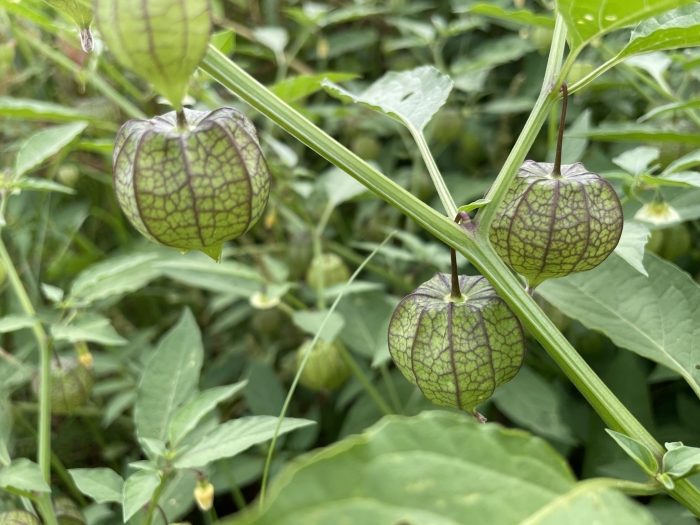Balloon Cherry
(Physalis angulata)
Balloon Cherry (Physalis angulata)
/
/

© chen ying-hsiao
CC BY-SA 4.0

























Estimated Native Range
Summary
Balloon cherry is valued for its ornamental fruits and is used in garden borders and as an interesting feature in edible landscapes. It requires minimal maintenance, growing well in full sun to part shade, and is tolerant of a wide range of soil types, provided they are well-drained. While the fruits are a culinary delight, caution is advised as the unripe fruit and other parts of the plant are toxic if ingested. In cultivation, it is important to manage its spread, as it can self-seed prolifically and become weedy. Gardeners should be aware of its potential invasiveness, especially in warm climates, and take steps to prevent unwanted spread.CC BY-SA 4.0
Plant Description
- Plant Type:
- Height: 1-3 feet
- Width: 1-3 feet
- Growth Rate: Rapid
- Flower Color: N/A
- Flowering Season: Spring, Summer, Fall
- Leaf Retention:
Growth Requirements
- Sun: Full Sun
- Water: Medium
- Drainage: Fast, Medium
Common Uses
Edible*Disclaimer: Easyscape's listed plant edibility is for informational use. Always verify the safety and proper identification of any plant before consumption., Low Maintenance
Natural Habitat
Thrives in disturbed areas, field margins, and open woodlands
Other Names
Common Names: Wild Tomato , Angular Winter-Cherry , Balloon-Cherry , Gooseberry , Hogweed , Cut-leaved Ground Cherry
Scientific Names: Physalis angulata , Boberella angulata , Physalis abyssinica , Physalis angulata f. genuina , Physalis angulata f. linkiana , Physalis angulata f. ramosissima , Physalis angulata f. tenuis , Physalis angulata subsp. lanceifolia , Physalis angulata subsp. pendula , Physalis angulata subsp. ramosissima
GBIF Accepted Name: